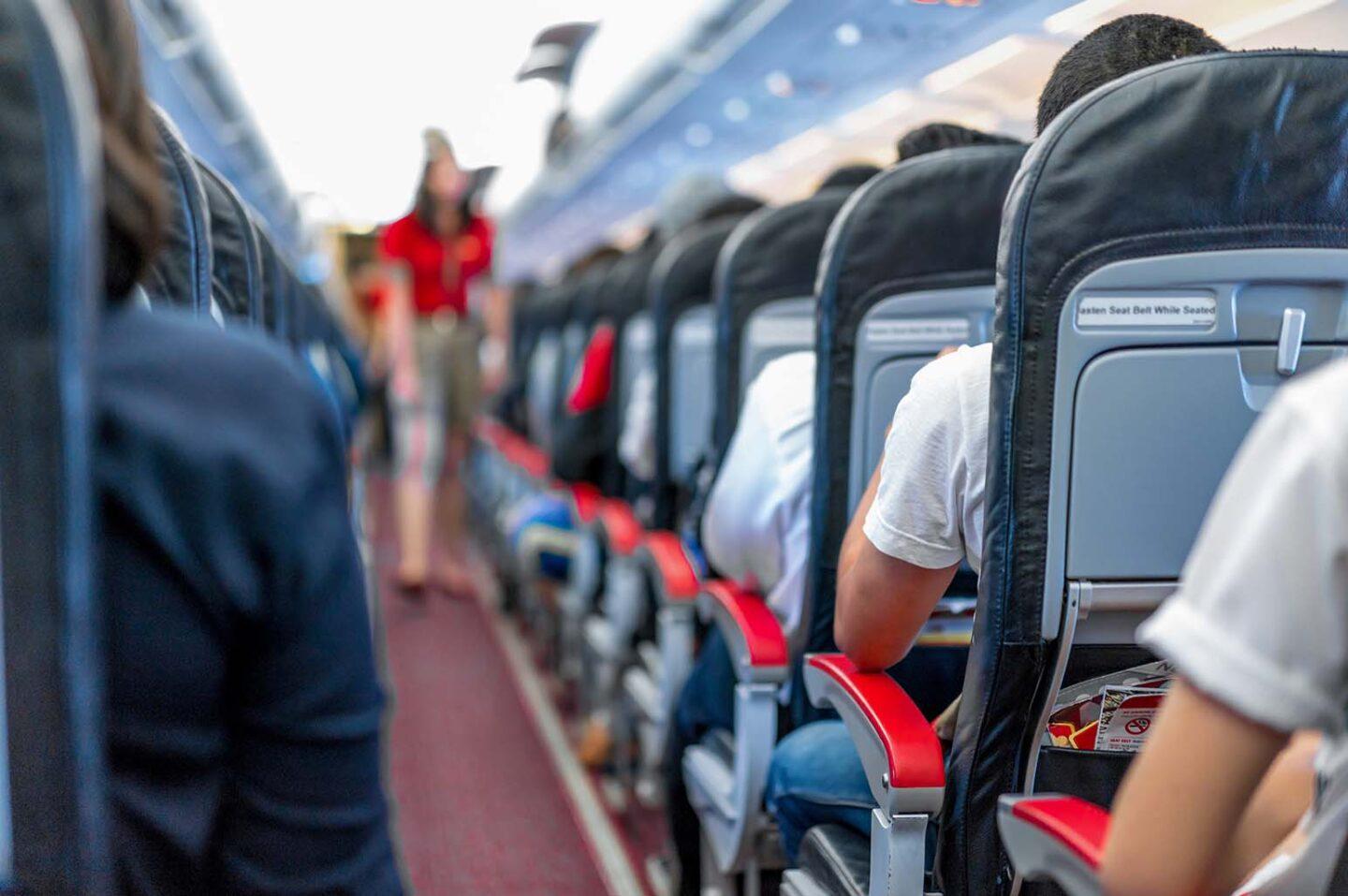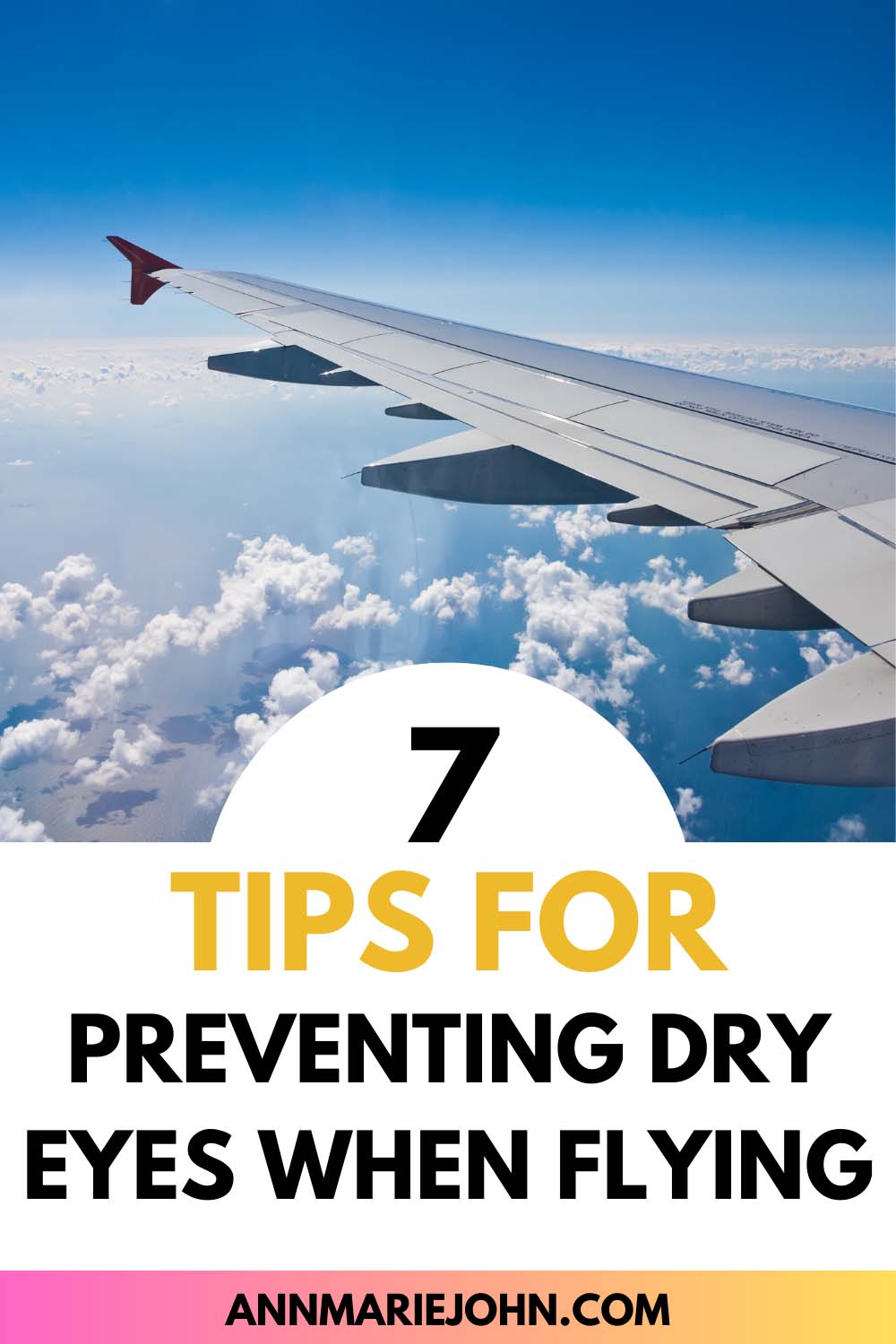Make flying more comfortable for yourself and your family! Learn how you can prevent dry eyes during long flights with these easy, practical tips.

Do you frequently travel and find yourself experiencing dry eyes? Have you ever wondered why this happens? The controlled air pressure and dry environment during flights can be harsh on your eyes. Ignoring this issue can lead to insufficient tear production, resulting in irritation and itchiness. But don’t worry; there are ways to alleviate this discomfort while on a plane. Keep the following tips in mind to help soothe your dry eyes during your travels.

1. Carry a Bottle of Eye Drops
Remember to pack a bottle of doctor-prescribed eye drops whenever you travel. Ensure that you only use eye drops recommended by your doctor. If you’re traveling with a child who experiences similar eye issues, it’s advisable to consult your doctor before administering the drops to them. Safety first!
2. Keep Yourself Hydrated
Staying hydrated is incredibly crucial. If you happen to indulge in coffee, tea, or alcohol during your flights, consider asking the flight attendant for a bottle of water each time instead of a cup. This simple tweak will help ensure that you stay adequately hydrated throughout the journey.
3. Switch to Glasses
Consider switching to glasses when flying, as wearing contact lenses during flights could potentially lead to dry eyes and negatively impact your eye health. Additionally, glasses are more convenient for napping, especially when you’re planning to watch a lot of media during the journey.
4. Use an Eye Mask
Opt for an eye mask to safeguard your eyes. While it might not be a fashionable accessory, it can significantly aid in inducing sleep by blocking out light sources and protecting the delicate skin around your eyes. If you find yourself staying in a hotel room, an eye mask will prove equally beneficial in preventing any light disturbances that could interfere with your sleep.
5. Switch Off the Air Conditioning
If you’re flying, one effective measure to combat dry eyes is to consider turning off the air conditioning vent located above your seat. This precaution helps to avoid the direct flow of dry air onto your face, which can be a contributing factor to eye dryness, especially given the already low humidity levels in the cabin. By taking this simple action, you can significantly reduce the risk of experiencing discomfort and irritation in your eyes, ensuring a more pleasant and comfortable travel experience. Remember, it’s little adjustments like these that can make a big difference in protecting your eye health during flights.
6. Give Those Eyes Some Rest
During your flight, it’s essential to give your eyes some well-deserved rest to combat dryness and fatigue. Take periodic breaks from screens, stand up to stretch your body, and dedicate a few minutes to meditate and relax. Embrace the opportunity to close your eyes gently, allowing them to rest and refresh. While in this peaceful moment, visualize and plan the exciting activities you’ll engage in once you reach your destination, keeping your spirits high throughout the journey. By incorporating these simple practices into your travel routine, you can ensure your eyes stay more comfortable and rejuvenated during your entire trip.
7. Blinking Exercises
Blinking exercises offer more than just relief from dry eyes; they also help alleviate headaches and improve blurry vision, making them an essential practice during air travel.
In addition to the precautionary measures mentioned earlier, certain airlines are now making efforts to create a more comfortable cabin climate, recognizing the challenges passengers face during long and frequent flights.
Furthermore, it’s essential to inquire with your airline about specific regulations regarding the carriage of liquids, such as eye drops, in your handbag. Having a small vial of eye drops easily accessible during your journey can contribute significantly to a more enjoyable and hassle-free travel experience. So, always be prepared and prioritize your eye health while traveling.
Who is at Risk of Developing Dry Eyes?
- Individuals who are 50 years of age or older typically have a higher susceptibility to experiencing dry eyes.
- If you are taking certain medications, it’s important to check with your doctor, as one of the potential side effects could be dry eyes.
- Pregnant women or women going through menopause may also encounter dry eye symptoms.
- People who wear contact lenses are more likely to develop dry eyes.
It is crucial not to overlook the symptoms of dry eyes, as they can lead to a condition known as dry eye syndrome. In cases of severe symptoms, it is essential to address the issue promptly and seek early treatment from an Ophthalmologist.
The above 7 tips are vital if you are traveling with kids that may experience the same or if you have sensitivity to astigmatism lights.
In Conclusion
The controlled air pressure and dry cabin environment are common causes of experiencing dry eyes during frequent air travel. Ignoring this discomfort can lead to insufficient tear production, resulting in irritation and itchiness. However, there are practical measures to alleviate this problem and ensure a more comfortable journey.
Carrying doctor-prescribed eye drops, staying hydrated, and switching to glasses instead of contact lenses are crucial steps to protect your eyes. Using an eye mask, taking breaks from screens, and performing blinking exercises can further promote eye health and reduce dryness.
Overall, being mindful of these tips and understanding the risk factors associated with dry eyes can help travelers have a more enjoyable and hassle-free travel experience, especially for those with sensitivity to astigmatism or traveling with children prone to similar eye issues.
